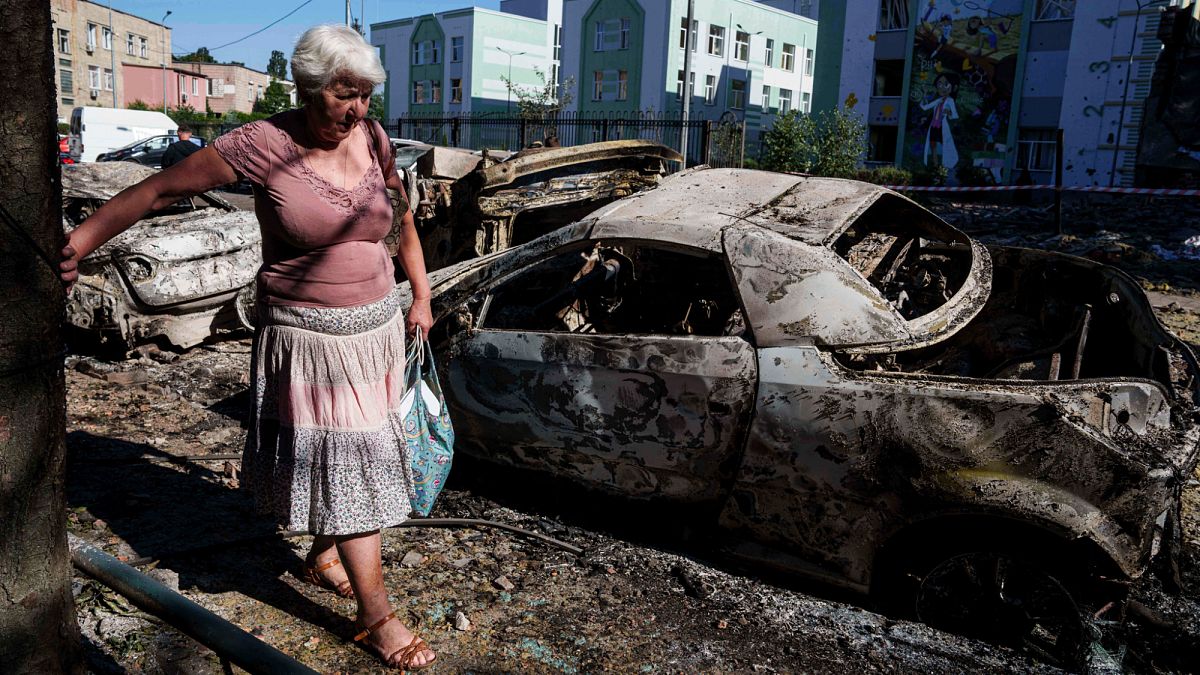

Over the past few days, significant events have unfolded in two of the world’s most volatile conflict zones, Ukraine and Gaza. Both regions have witnessed intense developments that continue to shape the global landscape, with implications for international diplomacy and regional stability.
In Ukraine, a record-breaking aerial offensive took place as Russia launched an extensive drone and missile attack. More than 550 drones and missiles were fired overnight, marking one of the most significant aerial offensives since the war began. The attack predominantly targeted Kyiv, the vibrant capital city, leading to injuries for at least 23 people. Residents of Kyiv, accustomed to the sound of sirens, described the scale and severity of this attack as particularly distressing. As the drones, notably the Shahed models, filled the night’s sky, they left behind a trail of destruction and ignited fires across the city. Firefighters and emergency services responded promptly to control the situation, demonstrating resilience in the face of adversity.
Concurrently, diplomatic tensions have been highlighted by the recent communication between U.S. President Donald Trump and Russian President Vladimir Putin. Following their phone discussion, Moscow reaffirmed its intent not to retreat from its strategic goals in Ukraine. Ukrainian President Volodymyr Zelenskyy characterized this rash escalation as a “deliberate act of terror,” noting the timing of the events as indicative of Russia’s diplomatic stance.
Meanwhile, reports emerged from European intelligence suggesting an escalation in the use of chemical weapons by Russia within Ukraine. This development has raised concerns among NATO countries, with calls for increased vigilance and coordination to deter the normalization of such weapons in conflict.
In parallel, the ongoing conflict between Israel and Gaza has reached a critical point, with escalating violence ahead of potential ceasefire negotiations. Israeli airstrikes have resulted in substantial casualties, impacting numerous families. Recent offensives led to the tragic death of Marwan al-Sultan, a prominent cardiologist, alongside his family, serving as a poignant reminder of the conflict’s human toll. As the violence intensifies, the international community remains focused on brokering a ceasefire to alleviate the humanitarian crisis in the region.
The possible ceasefire, facilitated by U.S. diplomatic efforts, remains under consideration by Hamas leaders, with an expected decision imminent. Amid these discussions, the humanitarian situation in Gaza remains dire, with reports detailing significant casualties, including women and children, due to both direct conflict and lack of access to aid. The complexity of providing relief in such a conflict-stricken area underscores the urgency of reaching a diplomatic resolution.
The United Nations has urged member states to reconsider trade ties with Israel in light of the ongoing situation, emphasizing the need for collective action to address humanitarian concerns. This call for accountability aims to foster a broader conversation about international responsibilities in conflict resolution and the protection of civilian lives.
These simultaneous crises highlight the delicate balance of peace and conflict that defines the current global order. The ongoing developments in Ukraine and Gaza serve as vivid reminders of the importance of diplomatic engagement and international cooperation in addressing complex geopolitical challenges. As efforts for resolution continue, the commitment to preserving peace and safeguarding human life remains a shared responsibility among nations.
Source: {link}
